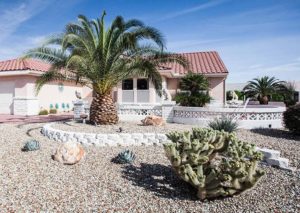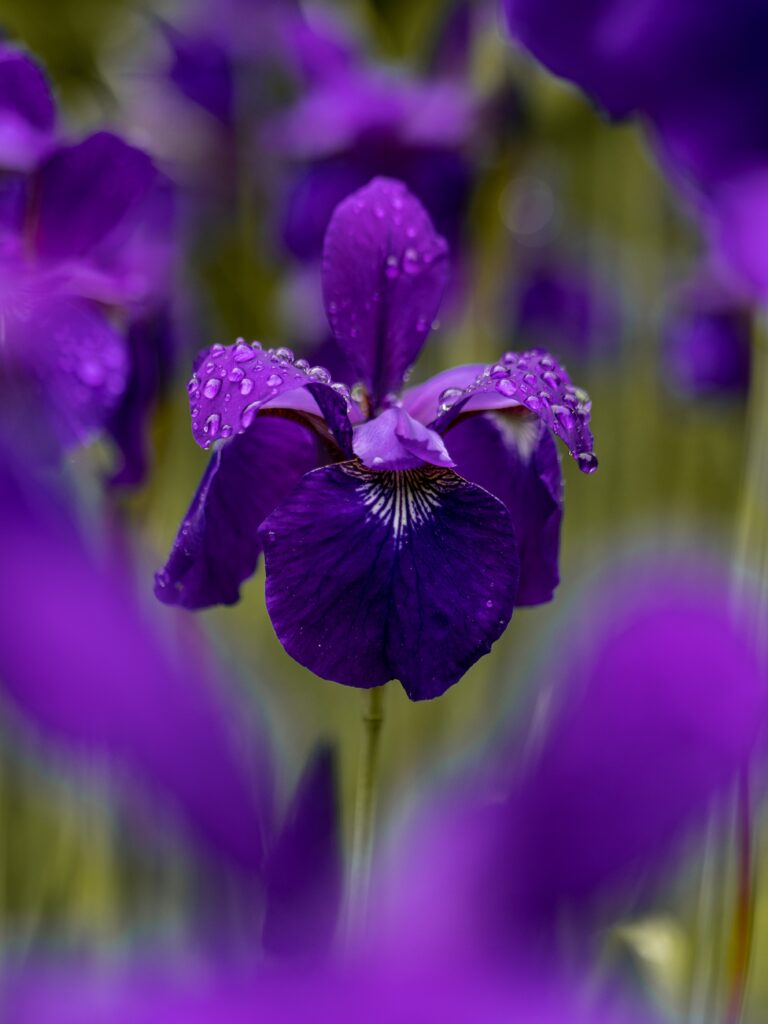A yard functions as a private oasis for relaxation, family fun, and soaking up some Vitamin D. As summer comes to a close and we spend less time cooling off in the pool, you may be surprised to learn just how much water we use in our yards each day.
The average American household uses more than 300 gallons of water per day. Nearly 30 percent of that water goes to outdoor use for things like sprinkling systems and swimming pools. Efforts to conserve water can have greater impacts on a larger scale, helping both our water supply and the environment.
As a responsible homeowner or renter, you can do your part to save water while still achieving a beautiful yard with xeriscaping. This guide explains the basic principles of xeriscaping and ways to reduce your water use.
Jump straight to the infographic for examples of xerophytic plants to build out your eco-friendly garden.
What is xeriscaping?
Xeriscaping is a type of landscaping that uses drought-tolerant plants or plants adapted to dry environments to reduce supplemental water use. While there are many environmental benefits to using less water, xeriscaping also appeals to those who wish to enjoy their outdoor spaces with less maintenance.
Whether you live in an area that has experienced drought or just wish to help conserve water, xeriscaping can be a great way to achieve a functional and beautiful landscape without wasting water. Designs range from clean and modern to lush and natural, leaving plenty of room for you to plan the yard or garden of your dreams. Many landscapers specialize in xeriscape planning but it’s also possible to create a drought-tolerant or low-water yard all on your own.
Because xeriscaping uses both native and low-water plant species, plant varieties are different from location to location. However, you aren’t required to live in a dry, arid climate to reduce your water use. Depending on the planting zone in which you live, you may find many drought-tolerant plants can thrive in your region.
Benefits of xeriscaping
Besides reducing the need for water, xeriscaping offers many other benefits to homeowners, businesses, and developers.
Design freedom
It’s a common misconception that drought-tolerant plants are limited to cacti and succulents. As you’ll learn below, there are many species of low-water trees, shrubs, flowers and grasses that can thrive under the right conditions. Xeriscaping gives you the ability to design whatever yard you want with features like stone, walkways, firepits and other backyard amenities. On a smaller scale, you can design a xeriscape garden that fits into any size space.
Low-maintenance
Although creating a xeriscaped lawn requires careful planning in the beginning, with proper maintenance you can expect to spend less time working in the yard and more time enjoying it. Watering, weed pulling, and mowing are all reduced with xeriscaping. Also, choosing native plants that are naturally adapted to your area means they are more likely to succeed and not require replanting.
Conserve water
Homes with automatic irrigation systems can waste up to 25,000 gallons per year without proper care. Along with wasting water, that’s also a lot of money down the drain. As our population grows, we’ll need to rely more on water sources to supply our growing needs. This becomes more challenging when areas experience drought, heightening the need to use water wisely.
It may not seem like there’s much you can do as an individual, but doing your part to conserve water can reach far beyond your neighborhood block. Xeriscaping is one way to reduce water use, so that you make the most of the land you live on.
Upfront costs
If xeriscaping sounds like something you want to implement at your home or property, make sure you’re prepared for the initial investment. As mentioned before, the planning process of xeriscape requires you to properly evaluate your yard and climate to design an efficient space.
Typically, xeriscaping will cost as much as or slightly more than a regular landscape job. The estimated cost is between $1.50 and $2.50 per square foot in some areas. However, it’s important to keep in mind that over time, you’ll spend less money on watering and maintenance.
Depending on your region and whether you choose to hire a professional landscaper, the total setup cost will vary. Specialized irrigation and watering systems can also rack up the bill even though they are more beneficial to the environment.
The seven principles of xeriscaping
The term “xeriscaping” comes from the Greek word “xeros” which means dry. To fully reap the benefits of your future drought-tolerant landscape, follow these principles when planning your xeriscape yard or garden:
1. Plan and design
Grab a sketch pad and walk around your yard to identify any areas that might need special planning. This includes natural slopes, steep hills, rocky areas or shady spots that will require special planting areas since they may be prone to drought, runoff or erosion. Analyze the areas of your yard and determine where plants with similar care needs will go. You’ll want to group plants that require similar amounts of water and sun near each other for maximum efficiency. Then, decide on features and amenities to help round out your budget.
2. Prepare your soil
The condition of your soil is one of the most important aspects of xeriscaping. You may need to make adjustments to it so that it is in the best shape for your drought-tolerant plants. Most species require well-draining soil so you might need to blend or amend with other materials. Adding organic material like compost can also improve the quality of your soil if it has tested poorly. Pick up a testing kit from your local nursery or home improvement store to determine the matter in your soil.
3. Reduce grass
Beautiful green grass is what most homeowners dream of when purchasing their homes. However, lawns require lots of upkeep with watering, mowing, pulling weeds, treating for pests and so on. When it comes to xeriscaping, you’ll want to minimize the amount of turfgrass and instead use drought-tolerant alternatives. Examples of lawn alternatives include ornamental grasses, artificial turf, sprawling low-water groundcovers, and mosses.
4. Include native plants
When selecting plants for your xeriscape, lean on species that are native to your area and avoid plants that may be considered invasive in your region. Choosing native plants means that they’ll already be suited for your climate and may even support beneficial insect populations like butterflies and honeybees. When picking up your plants from the nursery, make sure you are safely transporting them to their new homes.
5. Use water wisely
The purpose of xeriscaping is to reduce water use, so you’ll want to ensure that your irrigation system is set up efficiently. A popular xeriscape watering system is drip irrigation which delivers small quantities of water to your plants through nozzles. Avoid installing sprinkling systems to reduce water waste and try to water plants in the morning so they don’t sit soggy overnight.
6. Add mulch
Whether you choose to use compost or bark chips in your garden, using several inches of mulch can help prevent evaporation and the growth of weeds. Mulch is a huge component of xeriscaping because it allows plants to hold their moisture and reduces erosion. Mulch also allows you to create unique designs and add contrast to your natural landscape.
7. Maintain your yard
After putting in all of the planning and work, it’s important to keep up with your xeriscape lawn or garden so that it thrives. Maintenance usually includes adequate watering, removing weeds and other small garden tasks.
Now that you’ve designed a drought-tolerant oasis in your backyard, sit back and enjoy the low-maintenance that comes along with it. Continue your green thumb by picking out low-maintenance houseplants to spruce up your indoor decor as well.
This infographic covers the basics of xeriscaping and includes a list of xeriscape-friendly plants that you can work into your design. To understand more about the planting zone you live in, visit the USDA Plant Hardiness Zone Map to determine which plants suit your region.
 www.thezebra.com
www.thezebra.com


